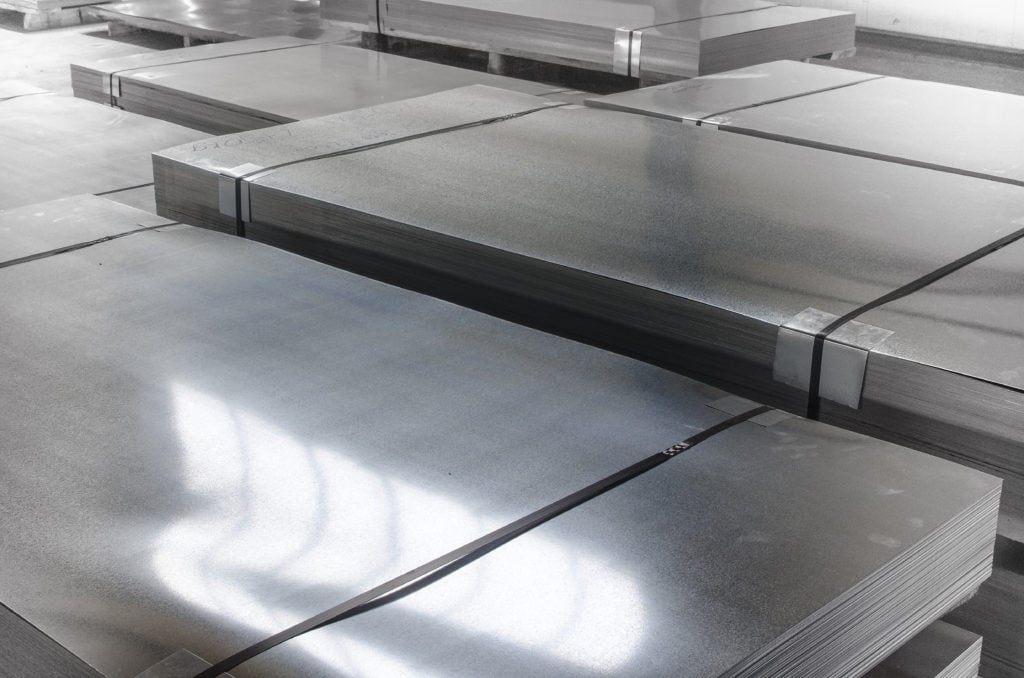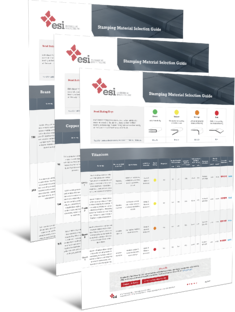Throughout 2021, the global market has experienced a sharp rise in prices for key metals such as steel, stainless steel, copper, and aluminum. These fluctuations have created challenges for manufacturers and businesses alike. However, ESI has developed strategies to navigate these price swings and deliver sustainable, cost-effective metal solutions to our customers. Our deep understanding of various metals has also given us valuable insight into how volatile pricing can impact overall business costs. According to a recent article in the New York Times, steel, stainless steel, aluminum, and copper are reaching record highs. There are three main reasons behind this surge, especially during the post-pandemic economic recovery: U.S. efforts to reduce material imports through tariffs have been pushing up prices. Companies producing steel and other metals are being encouraged to consolidate and bring manufacturing back home. Aluminum importers are facing supply shortages from Canada, while there is intense competition for copper and nickel in the energy storage and electric vehicle (EV) sectors. This trend also presents an opportunity to create thousands of new jobs in the U.S. economy. The reshoring movement accelerated with the pandemic in 2020, and even though some shipping costs have eased, many tariffs remain, adding to the pressure on prices. Supply chain issues worsened throughout the pandemic, leading to raw material shortages for companies ramping up production. As a result, freight shipping costs have hit all-time highs. According to reports, China’s 10 largest ports saw an average 126% increase in D&D charges year-over-year. These disruptions aren’t just overseas. A shortage of truck drivers, exacerbated by the pandemic and the surge in e-commerce, has led to longer lead times. Some industry experts now refer to the situation as a “shipping Armageddon.†These factors have led to a situation where demand for materials has outpaced supply, making it difficult for manufacturers to provide accurate pricing and lead times for projects. As industries continue to adjust to these supply chain challenges and ramp up production during the post-pandemic recovery, demand for metal products is expected to grow. When combined with increased investment in clean technology and infrastructure in both the U.S. and China, this creates a perfect storm of high metal prices. While supply shortages and rising demand are affecting nearly every metal market, the most commonly used industrial metals are experiencing the biggest price increases. Manufacturers should expect higher costs for steel, aluminum, copper, and nickel. How to Select the Right Material for Your Stamped Metal Part: Learn more here Although record-high metal prices are expected to decline as the global economy recovers, they are unlikely to return to pre-pandemic levels soon. The market may remain tight into 2022 due to large-scale infrastructure projects in the U.S. and China, which continue to drive demand for these metals. Additionally, ongoing shipping challenges could lead to extended lead times for certain materials. Given the tight supply, we recommend planning for several extra months in your production timelines for 2022. Due to sourcing uncertainties, many projects have faced delays. It's crucial to understand how material choices affect both cost and turnaround time. At ESI, our team is here to help you make informed decisions that keep your project on track and within budget. We are overcommitting to secure the materials needed for future projects. With over 30 years of relationships with metal suppliers, we stay ahead of market trends and can offer alternative designs or materials that may reduce costs or improve delivery times—without compromising quality or performance. No matter what the market looks like, our metal experts at ESI work hard to maintain competitive pricing for our customers. We closely monitor metal costs and trends to ensure your project is completed efficiently and affordably. To learn more about our metal products and services, contact us today! {
"@context": "https://schema.org",
"@type": "FAQPage",
"mainEntity": [{
"@type": "Question",
"name": "When Will Metal Prices Drop and Lead Times Stabilize?",
"acceptedAnswer": {
"@type": "Answer",
"text": "Over the course of 2021, the market has seen prices for steel, stainless steel, copper, and other popular base metals rise significantly. Fortunately, ESI has learned how to work with market fluctuations to create sustainable, cost-effective metal products for our customers. Our extensive experience working with a variety of metals also gave us an inside look at the effects that fluctuating metal prices can have on the overall cost of business operations."
}
},{
"@type": "Question",
"name": "Why is the price of metal increasing?",
"acceptedAnswer": {
"@type": "Answer",
"text": "According to a recent article published in the New York Times, prices for steel, stainless steel, aluminum, and copper are at record highs. There are three primary reasons for the price increase in our post-COVID economic recovery period."
}
},{
"@type": "Question",
"name": "Which metals are affected?",
"acceptedAnswer": {
"@type": "Answer",
"text": "While supply shortages and high demand are affecting almost every metal market, the metals most frequently used in industrial production are the most affected. Manufacturers can expect to see increases in steel, aluminum, copper, and nickel especially."
}
}]
} Uv Glass Ink,Uv Metal Ink,Uv Screen Printing Ink,Uv Offset Printing Ink Lauer Water-Based New Material(Foshan)Co.,Ltd. , https://www.lauerink.com
Why Are Metal Prices Rising?
1. Tariffs and Reshoring Efforts
2. Pandemic-Related Transportation Disruptions

3. Global Supply Constraints
Which Metals Are Most Affected?

When Will Prices Drop?
Stay Competitive with Cost-Efficient Metal Products from ESI
When Will Metal Prices Drop and Lead Times Stabilize?
One of the main advantages of UV ink is its ability to adhere to a variety of materials, including plastic, glass, metal, and paper. This versatility makes it ideal for printing on unconventional surfaces, expanding the possibilities for creative and innovative designs. Additionally, UV inks are known for their superior color saturation and clarity, producing high-quality prints with stunning visual impact.
Another advantage of UV ink is its fast curing process, which requires no drying time. This increases the productivity and efficiency of the printing process, resulting in faster turnaround times and lower production costs. Additionally, the instant curing of UV ink creates a scratch- and abrasion-resistant surface, ensuring long-lasting durability of printed materials.
Comments are closed